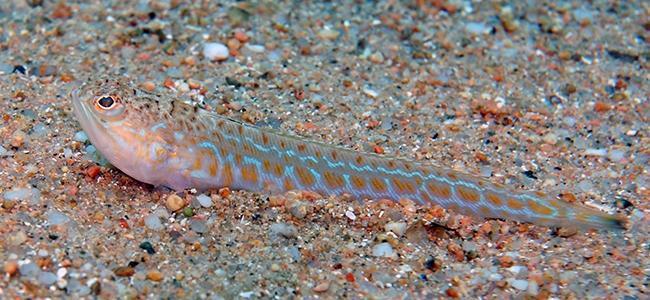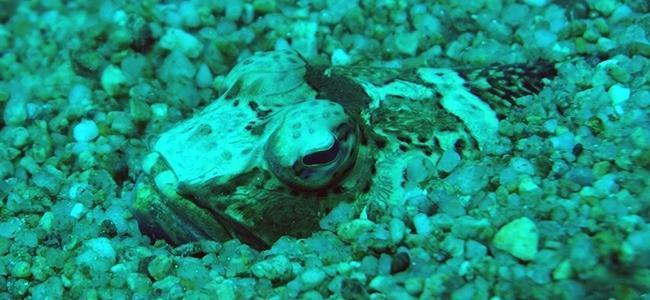Weevers (Trachinidae) are a small family of marine species that inhabit the waters of the western Atlantic, Mediterranean and Black Seas. They have an elongated body and are generally brown in color. They are characterized by the presence of two separate dorsal fins, the first with 5-7 spines, and the second very elongated with 21-32 soft rays. The anal fin is elongated and runs from the plane of the pectoral fins to the base of the tail. They have 2 spines and 24-34 soft rays. Pectoral fins with 15 rays, and pelvic fins with 1 spine and 5 soft rays, located in an anterior plane to the pectoral fins. Weevers have venom glands associated with both the first spine of the first dorsal fin and a spine located on the operculum. The venom secreted by these spines is strong even for humans. Although there are hardly any serious cases reported, the stings of these species are usually very painful.
Benthic in habits, Weevers are usually found buried in the seabed, either in muddy or sandy bottoms, with only the eyes and part of the mouth showing. With this posture, they hunt by lurking, buried, waiting for some clueless prey to pass in front of them, and thanks to an extremely fast movement, they are ingested in the blink of an eye. Their diet is based mainly on crustaceans or small fish. Since they are buried in the sand, and generally in shallow waters, accidents are frequent with humans, who step on them without realizing it when walking in shallow waters, and the poisonous spines get stuck in the soles of their feet. The largest recorded size of a Trachinidae species has been Trachinus araneus, which reaches a maximum total length of about 45 cm. This family of fishes is comprised of only 9 species that are grouped into two genera: the genus Echiichthys which contains only one species, and the genus Trachinus in which there are currently 8 different species.

